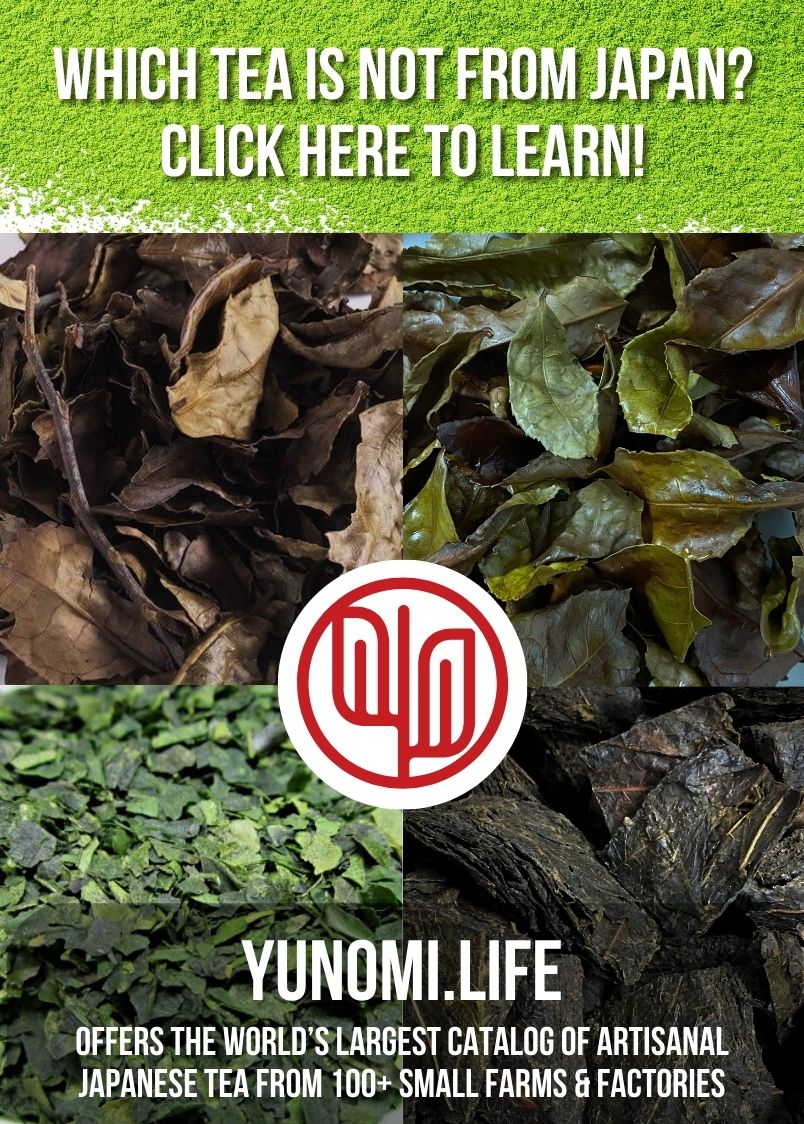Nausea After Green Tea, But I Want It for Health…

While there are people switching to tea having discovered a whole new world of gastronomic experience, some others are switching in for health. Undoubtedly, the increasing popularity of various recent scientific studies has raised the awareness in more people of terms such as tea catechins, tea polyphenols, or EGCG etc, and tea’s effects in anti-oxidative, anti-aging, anti-obesity, anti-carcinogenic, etc, etc.
A group of tea substance, tea catechins, has been in the centre of it. They have proven to be a key contributor to the positive results of all these studies. And green tea has a lot of them. While a tablet of tea extracts may give you 250, 500, or 1000 mg of them, you can sip up as much as 1260 mg in a single cup (1), dependent on the quality you are using.
No wonder people are switching in for the real thing.
However, green is not everyone’s cup of tea. Not especially because most people get theirs from off the supermarket shelf as long as there is the word green in the pack label. They certainly are not the best tasting beverage. Some people simply get nausea after it.
Well, a metal box with four wheels is a car, so is an Aston Martin.
Different green tea tastes differently. Some are better than others. Some are very much so. Not only in taste, but also in health contents. ( Read more about health content difference )
Besides quality grades, there is also the big difference in variety.
Peter may love his Gyokuro, Paul rather a cup of Longjing, but Mary may find what she needs the most in a bouquet style Phoenix, not even a green tea at all.
Different tea varieties, different TCM nature
There are many types of green tea each with individualistic taste profile and, most importantly, different TCM nature. For example, a Gyokuro can be quite grassy and seaweed-like, while quite “cold” in TCM term. Either the taste, or its TCM nature, or both, can cause a person to feel sick, particularly if that person’s physical condition and the particular tea does not match.
To benefit from tea, it is important to find those variety with the right TCM nature that matches your body condition.
If you cannot drink a sencha or gyokuro, a medium or high fire hand-roasted green tea, such as Longjing or Dinggu Dafang, are less “cold” in TCM term. They taste warmer and malty rather than grassy or seaweedy, generally preferred by more people, and especially those with a TCM cold constitution.
So we have here tea nausea solution number one: you have to find a tea that match to your physical and taste needs.
There are yet other alternatives
To benefit from tea, it is important for a person to turn it into a daily habit and use it as a staple drink. Find the tea that makes you comfortable and that is delightful. Sometimes a step beyond the “green” category into the open horizon of other tea choices maybe the very answer that you are looking for.
White Peony (Bai Mudan) possesses similar levels of tea catechins like a fine green tea. A matured one can be even less TCM “cold” than roasted greens.
Bouquet style Phoenix oolongs (Fenghuang Dancong) are also like green tea, and less cold in TCM nature. Certain studies even find them have higher catechins content than most fine green teas! They generally have a fuller taste profile than most green teas and a lot more aromatic.
Teas with neutral to warm TCM nature
If you have tried all of the above and find them not TCM “warm” enough for you, may be warmer style oolongs such as classic style Phoenix or, even warmer yet, Wuyi, are your cup of tea. These teas have always been used as medicine too, especially against indigestion, diarrhea, colds and flus. They are especially suitable for those with weaker stomachs or those during menstruation.
Nick-named “Old People’s Tea” is pu’er. Either truly post-fermented pu’er or well-matured shengcha pu’er. They are not only easy to prepare, flexibly dilutable, and enjoyable both light or strong, but also neutral in TCM character. It degreases and fights cholesterols. The varieties under this “puer” label range hugely and so is the taste.
Black tea ranges from neutral to warm in TCM nature, with the exception of Darjeeling, which, depending on the processing particulars, ranges from cool to cold. Use a respectable, whole-leaf quality anyways, such as a good Minhong, so you can ensure a great polyphenol amount, as well as a delightful drink without cream and sugar.
Have you been making your tea too strong?
Another possibility that a person experience nausea after green tea is having it too strong. Or when you drink such strength when you have an empty stomach. Or having different varieties of tea too close together. These are all inductive for tea drunk. Nausea, in addition to headache, is a symptom of tea-drunk. ( Read more about tea-drunk )
Making it lighter and avoid overdose on an empty stomach can well be the solution for you.
Have you been drinking your tea when it is cold?
A popular cause for nausea after green tea is actually even simpler: the temperature of the tea when you drink it. Repeatedly in historical documentation of the use of tea in relationship to health, it has been mentioned that the liquid has to be drunk when hot, and that the cold ‘evil’ in the plant would become dominant once the liquid turns cold.
I’d rather dilute the tea with boiling water to make it hot, or dump that liquid if once it has turned cold. If you have to drink cold tea, use a different tea with a warmer TCM nature. If you have to use green tea, use a complex recipe for a TCM nature that is friendlier to your own constitution.
Gongfu infusion: maybe a fun solution for you
Solution number three for avoiding nausea after tea is so straight forward to most old timers like myself — drink the tea when it is still hot — that we wouldn’t know it can be done otherwise.
However, drinking a large cup of tea when it is still hot can scald your tongue and a cup of tea that is warm now will be cold later. That brings us to the wildcard solution: gongfu tea infusion.
Preparing tea to a strong enough solution but in a small amount not only allows you to drink the tea when it is still hot, but also forces you to drink a bit at a time — allowing time for you to feel if your body likes that tea or not, or whether you are having too much already. Best of all, it is a great way to try a lot of tea varieties, and adjusting easily the desire strength of that particular tea that for the taste as well as how your body is accepting it.
I hope you can find at least one good tea that you enjoy drinking, or better yet, discover the wide, open world of the tastes of fine teas. For a great delightful beverage habit, as well as your better health.











Certainly need to look for good tea. Maybe 100 quality grade levels up from teabag products. Organic this and that is just a scam in many brands.
all this TCM nature stuff is a load of bollocks
It is understandable that some people do not wish to understand the nature of things in perspectives other than what they are used to. However, the use of uncivilised language to express difference in opinion illustrates only the intelligent level of some of these people. It unjustly gives a lesser image to all those who disagree but after educated analysis.
Might the nausea also be a bi-product of too many pesticides, petro-chemical fertilizers and herbicides found on tea — even supposedly “clean” tea. Know your sources well!
Green tea, in particular those that are steamed, or cured otherwise in low temperature, are not suitable for the weaker stomach. Drinking in smaller quantity and while the liquid is quite hot helps to improve the situation. It is an important health issue that all tea users should have as a common sense.
We are trying to promote better common sense in the use of food and beverage items that may help the modern person with better health. Tea is only but one of the many items that we use so carelessly. Other things that people have so taken for granted are ice, oils, salt, sugar, vegetables, and even grains. Knowing the true nature of things helps to enjoy a fuller, happier life.
As much as we loath the abuse of chemicals in ANY agricultural products, myth such as that @Markham stated diverts the focus in knowing the true nature of tea. Anything that is so loaded with chemicals that could cause nausea to a person is so toxic that the person should be rushed to the hospital.
If we are to worry about bad chemicals in what we intake, let’s worry more about the residual hormones, antibiotics etc in animal products, the excessive sugar, alcohol, colouring, flavourings and preservatives in those bottled beverages. The quantity, impact and harms that these things do to the body go far beyond the minute parts/million of chemical residuals even in a tea that fails an MRL test. The benefits of real tea far outweigh the concerns of possible agricultural contaminants that maybe in it.
I find some non-organic teas make me very sick, it definitely makes sense to look for a tea that isn’t laden with chemicals. Also I wonder about teas that use plastic teabags … Seems like we should all be looking for high-quality, organic tea that has no plastic teabags!